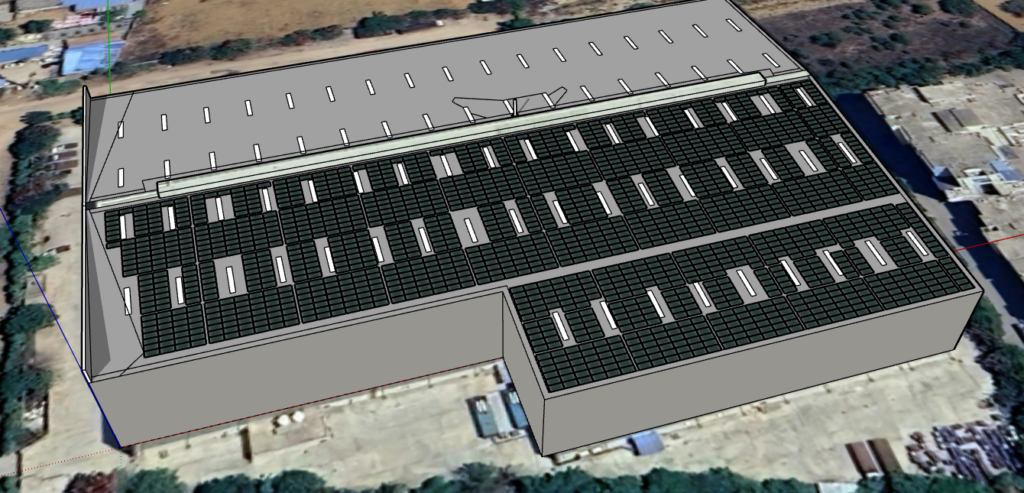Designing a solar plant is a complex and intricate process that requires careful consideration of various factors to ensure optimal efficiency, reliability, and sustainability. From site selection to equipment specifications, every decision can impact the overall performance of the solar facility.
In this blog post, we will explore seven common mistakes that designers should avoid to ensure the success of a solar plant project.
Avoid mistakes while designing a solar plant
Link : https://unboundsolar.com/blog/solar-mistakes
Before we dive into the specific mistakes, it’s important to emphasize the importance of careful planning and comprehensive feasibility studies when designing a solar plant. Proper site assessment, understanding local regulations, and anticipating future needs are fundamental to any successful solar project. With that in mind, let’s explore the seven common pitfalls to steer clear of:
Common Pitfalls to avoid
Inadequate Site Assessment : One of the most crucial mistakes is not conducting a thorough site analysis before designing the solar plant. Factors such as shading, topography, and climate conditions play a significant role in determining the plant’s performance. Additionally, proper orientation of solar panels, along with the accurate placement of panels, inverters and cabling, can be determined through a proper site analysis, helping to optimize costs and enhance overall efficiency.
Poor System Sizing: Size plays an important role in the designing of the solar plant. Oversizing or undersizing a solar power system can have serious consequences. Oversizing may result in unnecessary costs and inefficient use of resources, while undersizing can lead to insufficient energy production. To avoid these pitfalls, designers must carefully analyze energy consumption patterns, future growth projections, and available space to determine the appropriate size of the solar plant. It is also crucial for designers to select the appropriate components with the right capacities to minimize losses and ensure optimal performance.
Ignoring Shading Issues: Shading is a commonly overlooked aspect of solar systems that can have significant consequences. Shading can cause solar panels to develop hotspots, which can lead to overheating and ultimately shorten the panel’s lifespan. Failing to account for shading from nearby structures, vegetation, or equipment during the design phase can lead to unexpected efficiency losses. Proper planning and design can help minimize shading issues, ensuring optimal energy production.
For further information, have a look at the attached blog
WHY SHADOWING MATTERS IN A SOLAR POWER PLANT
Shadow plays an important role while designing a solar plant
Link : https://www.indiamart.com/proddetail/on-grid-solar-power-installation-service-26215540473.html
Neglecting Operation and Maintenance Considerations: A solar plant’s success extends beyond the initial design and construction phases. Neglecting long-term operation and maintenance considerations can lead to higher maintenance costs, and reduced overall system reliability. To minimize such things, designers must incorporate features that facilitate regular maintenance activities and accessibility for repairs.
Component Selection Errors : Solar system is a complex electrical system that includes various components. Each component selection is crucial, and neglecting any part can lead to its own set of consequences. Poorly chosen solar panels, inverters, and other equipment can result in decreased efficiency and a shorter system lifespan. Designers should prioritize high-quality, durable components that are well-suited to the specific conditions of the site according to the location.
Ignoring Regulatory Compliance: Proper planning for grid integration is a vital step in every solar project. Failing to consider grid compatibility, regulatory requirements, and necessary infrastructure upgrades can lead to increased costs during the project’s implementation. Ignoring local regulations, environmental impact assessments, and permitting requirements can result in legal issues and project delays. Designers should conduct thorough research and adhere to all relevant regulations, ideally starting for the project’s initial stages, to ensure seamless and lawful implementation.
Conclusion
Designing a solar plant is a multifaceted task that requires attention to detail and an understanding of numerous variables. By avoiding these common mistakes, you can ensure your solar project’s success, maximize energy production, and minimize unexpected costs. By choosing SafEarth, you can ensure a well-planned and executed solar plant that not only benefits your organization but also contributes to a greener, more sustainable future for all.
Join our SafEarth marketplace to explore your options and buy your solar system from qualified installers in your area to make the switch easy and hassle-free.


Wow wonderful blog layout How long have you been blogging for you make blogging look easy The overall look of your site is great as well as the content